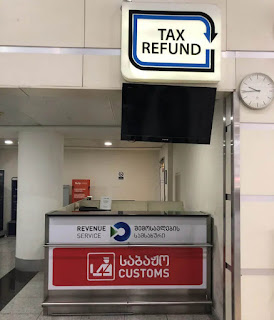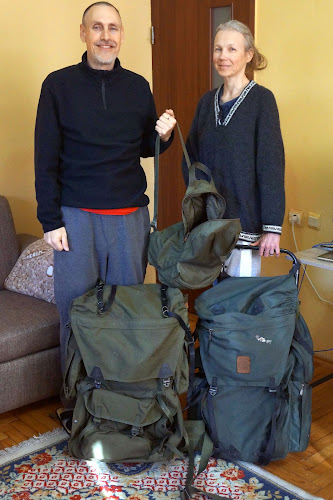Oman - The Hidden Jewel of The Middle-East
Of all the countries in the Middle-East, Oman is the most peaceful. The country is slowly gaining popularity among tourists.
Oman was a really nice surprise for us. We had long been thinking about going there, but the country never seemed to fall on our route until now that we were heading from Armenia to Asia. Thanks to Ali, who was our work exchange host, we ended up staying two months in Muscat and started to appreciate this hidden jewel of the Middle-East.
Peace and love
Of all the countries in the region, Oman is the most peaceful. The much veneered sultan Qaboos has avoided conflicts with the war-waging neighbours including Yemen and Saudi-Arabia. Even in everyday life, Omanis search for consensus and avoid talking about religion or politics, as they might cause disputes. In fact, talking about these topics is outlawed. The downside is that when many important subjects are never addressed, they cannot be debated or changed. They become (Qaboos) Taboos.
Oman has their own brand of Islam, abadi, as well as sunnis and shias but all Omani muslims look upon each other as brothers. The country is fairly conservative compared for example to Malaysia. While Malay women dress casually, in Oman, local women always wear hijab, the veil, and dishdasha, which is the long and loose dress. While men also love to wear the national dress and the little hat, kuma, or turban that goes with it, they also wear Western style clothes. For men, dishdasha is a choice (except if you work in the public sector), while for women it is a must, or at least there is social pressure to wear it rather than for example jeans. In 40-50°C heat all Omani women must be feeling really hot inside their black dresses.
Men and women usually live separate lives. While we got to know a lot of Omani guys during our stay, we never made acquaintance with an Omani woman. They seem to lead a quiet and secluded family life, not making much contact with outsiders.
Islam complicates dating and marriage also in Oman. If a man wants to get to know a woman, he may start following her in the street to show his interest, which in Western countries would be considered as harassment and stalking! Flirting is of course the same everywhere in the world regardless of the religion. While the women cannot play with their hair, because it is covered, they play with their hijab, with downcast eyes and a little smile on their lips. To get to the point of marrying someone is complicated, although this of course depends on the family. Some are conservative, while others are open to new ideas. Traditionally, the groom needs to pay an equivalent of about 50.000 euro for the bride's family. No wonder most guys we met were single. If the bride or the groom is a foreigner, marriage licence is not automatic. The couple needs to apply for the licence from a special committee, and nobody knows how the decisions are made.
Nationalism and social security
The Omanis are very protective about their nationality, which may look racist. For us, this was not a shock, because the Finns are similar. Even people born and bread in Oman (or in Finland) but coming from immigrant families are not treated and looked upon as locals. In Oman, most of the immigrant workers originate from India, Pakistan, Bangladesh, and the Philippines. They will always be second class citizens or, to be more precise, not citizens at all because to be an Omani, you have to be born in the country and have purebred Omani parents.
The Omanis, however, just like all other nationalities in the world, are by no means 'pure'. The Omanis have ancestry in Africa, particularly in Zanzibar, and in many places in the Middle-East including Iran. They are proud of their tribes, and many people still live in traditional villages where everybody is somehow related to each other. Oman is a small country. There are only 2,6 million Omanis, but immigrants double the population. Most of the immigrants work in jobs that Omanis don't want to do such as cleaning and construction.
The development in Oman has been rapid. The first oil deposits were found in the 70s, when there was only one school and one hospital in the whole country. Now, all Omanis get free health care and education, and when they get married, they are given a plot of land so that they can build their own house. Nobody is paying taxes, not even firms. The country is wealthy and it seems that the Sultan has done a good job in distributing the riches for the benefit of the whole nation.
Visas and safety
For entering Oman, you need a visa, which is one of the most expensive in the world if you calculate the daily price. For the citizens of the EU, a one-month visa-on-arrival costs 50 euro (1,65 €/1,75 USD /day). It can be extended once for another 30 days and the procedure is simple. No questions asked, they just want to take your money. To stay longer, after two months you need to exit the country and come back. We heard about people who had stayed this way in the country for a year, which seems to imply that there are not restrictions regarding the number of visa-runs.
We arrived from Dubai and had no problems entering, except that the border formalities were slow and we had to pay an extra, arbitrary fee for using the road in the UAE. It took altogether three hours to get through. Sometimes tourists get scammed at the land borders. One family had paid for a 30-day visa but only got a 10-day stamp, which they didn't notice until it was too late. They had to pay a hefty fine of some 800 rials (1940 €/US $2080) at the airport when leaving. Like everywhere in the world, visas are the easiest way to unwelcome tourists.
In general, however, Oman is very friendly and one of the safest places we have been to. People don't necessarily lock their doors and you can walk out any time at night without anybody bothering you. The only hassle is caused by overenthusiastic taxi drivers who honk their horns trying to get your attention. Currently, zika-virus-free Oman is attracting especially pregnant couples.
Weather, beach, and camel beauty contests
We were in Oman in December-January, which is the local winter. There was plenty of sunshine and the temperature varied between 22-30°Celsius during the daytime, and 16-20°C at night. It rained twice, once just a small drizzle, another time there was a bit heavier thunderstorm. Although it rained only for a couple of hours, the streets were flooding. Obviously, rain is so scarce in Muscat that they haven't even bothered to make a proper sewerage system. A big tank truck came and pumped the water off the streets. It was a chaos. Sometimes there are even casualties.
Another, but weekly chaos was at the beaches in Muscat. When weekend comes (in Oman Thursday night is like the Western Friday night and time for partying, Friday is their Sunday which is spent with family, and well, Saturday is Saturday and Sunday a normal working day), people rush to the beaches for having barbecue. Our nearby beach in Al-Ghubrah was crowded and of course after the party, the beach looked like a junk yard. The local cleaning system was efficient, though, and in the morning a pack of guys came to pick up all the rubbish. Locals, by the way, have a funny understanding of beach life. They drive on the beach with cars making beaches more like car parks, while the green areas around the beaches are used for chilling out.
Most tourists coming to Oman rent a car. Public transportation system is not very developed. Among the most popular sights are the historical town of Nizhwa, Wadi Shab in Sur where there is a sinkhole and narrow mountain ravines, and the desert. We managed to escape all the must-see places and instead enjoyed local everyday life. Our kind of tour was a trip to the countryside to fraternise with camels. Petting these huge, overgrown dogs appreciated by locals was awesome. Nowadays they are just pets, because cars have replaced camels, but camel beauty contest are a big thing in Oman and the winners become local celebrities.
Food, internet, and money
We enjoyed the variety of vegetables, some of which grow in Oman including bell peppers and eggplants. Most fruits come from Asia, but they also have their own delicious bittersweet baby banana, which grows in the desert. Like in the Middle-East in general, tahini, hummus, baba ghanoush, moutabel, and pita bread are widely available. The UAE-owned supermarket chain Lulu had huge selection and affordable prices. We only wish they wouldn't use so much plastic, because people throw them around and they kill animals and poison the fish (and eventually those who eat fish).
Alcohol is even more expensive than in Finland because of Islam. You need to buy a license that grants you the right to buy alcohol, and the annual license fee depends on how much alcohol can be bought monthly. Muslims and locals cannot get a license. They have to buy alcohol in the black market or bars, where it is even more expensive. This is a clever system to collect money and something that even Finnish officials haven't figured out yet. In Finland, the state has a monopoly to sell alcohol, which is as expensive as in Oman due to extortive alcohol tax. Officially, the purpose of the system is to protect citizens from becoming alcoholics, but at the same time the state wants to make as much money as possible with alcohol tax.
The Internet in Oman is almost as bad as in India. One of the major reasons for this is the Internet censorship. The Omani Ministry of Truth is making lists of websites that contain abusive, offensive, obscene, immoral information or promote misleading or fraudulent information or illegal material in Oman. The censorship is easy to circumvent using a proxy or a vpn. Many of the blocked websites contain material such as computer hardware fixing instructions and programming language tutorials. Skype is also banned in Oman. You can't even access Skype website and all calls are blocked. Government-owned Omantel is behind the transgression wanting to promote paid phone calls. Thanks to these desperate measures, Omani Internet has been technically crippled making it slow and unreliable.
Oman's currency is rial, which is pegged to the US dollar. 1 rial is 1000 baisa, which they write with decimals that include three digits. 35,000 rials, for example, is 35 rials. This was a bit confusing in the beginning. If you travel to Oman, please note that not all ATMs accept foreign cards. The ones we used successfully included the Bank of Muscat and HSBC.







Comments